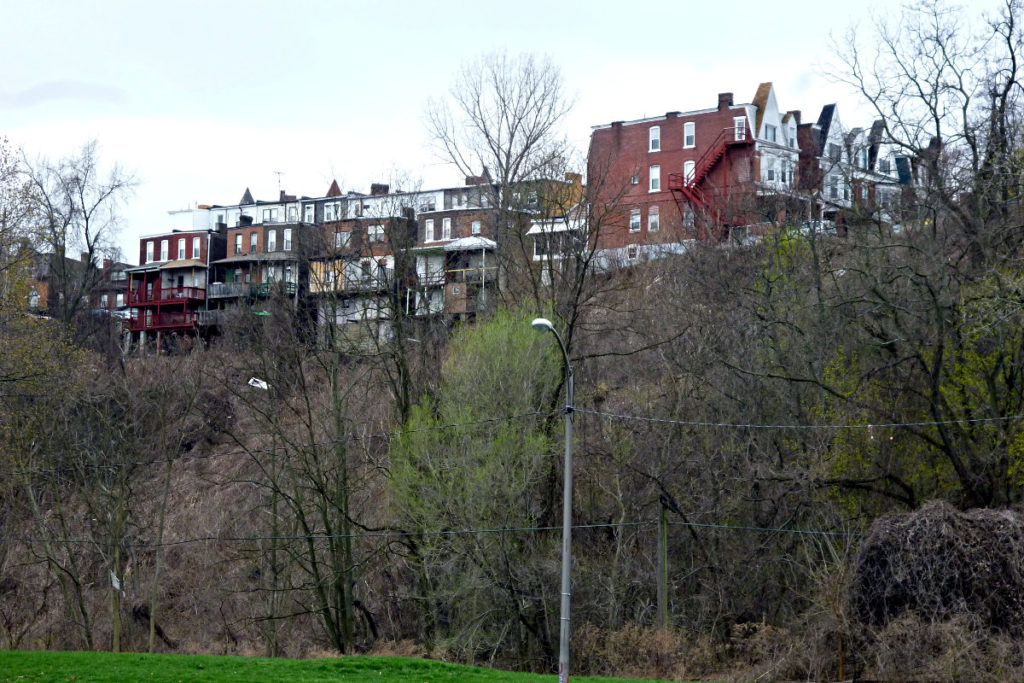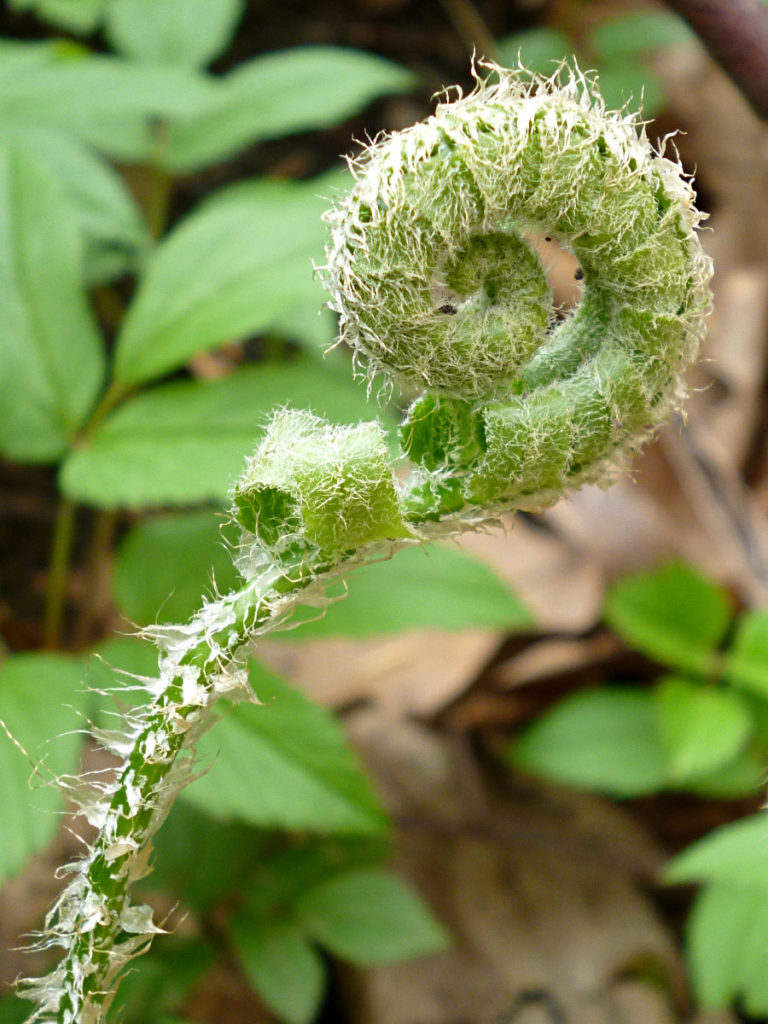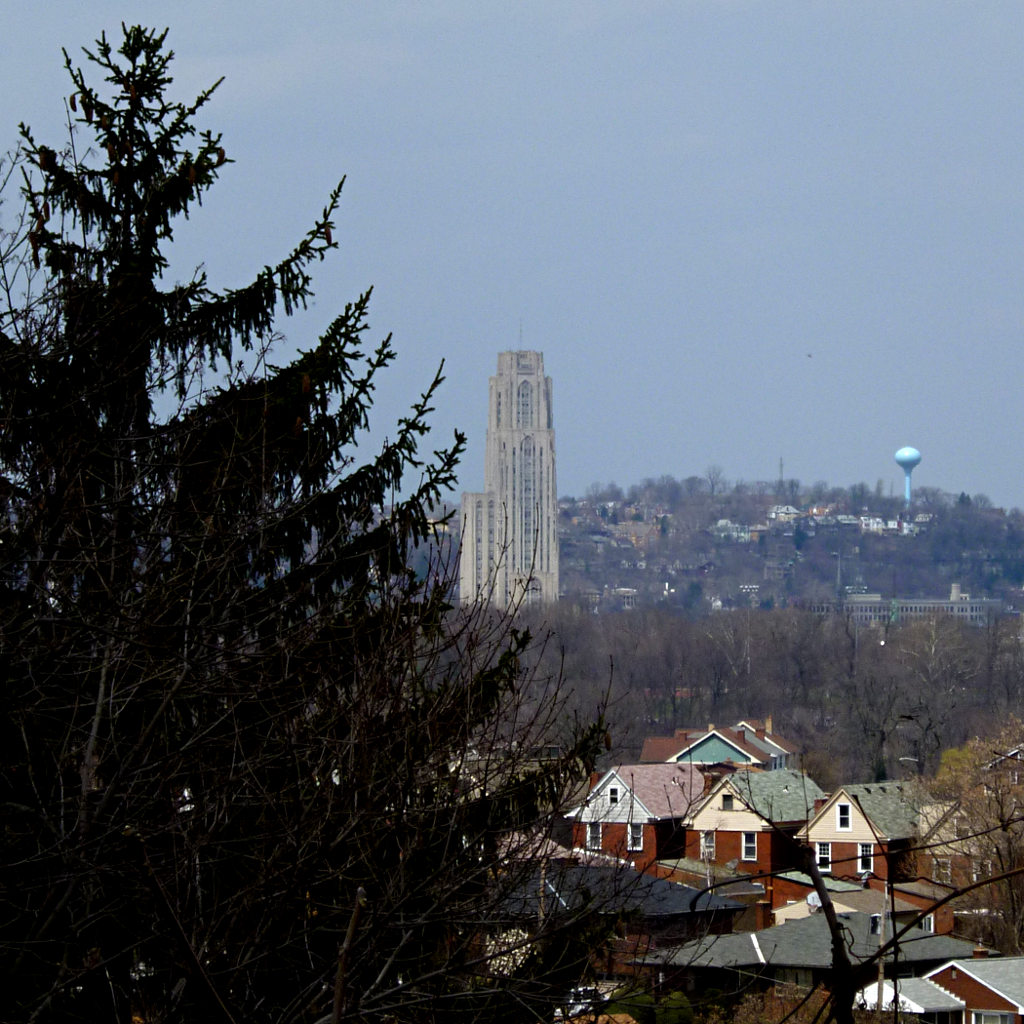This waterfall is usually a gentle and friendly thing, as we see it here, but it can be a roaring cascade after a bad storm. There used to be two footbridges over the stream below, but both are mangled wrecks since a storm a few years back.
-
Panther Hollow Lake
Panther Hollow Lake in early spring, with the Cathedral of Learning in the background and a pair of Canada geese floating on the water.
-
Cliffside Rowhouses in South Oakland

Tall, narrow rowhouses in South Oakland cling to the edge of Panther Hollow. Many of the houses have been converted to apartments.
-
Fiddlehead

As nature awakens from her winter slumber, the ferns uncurl their elegant fiddleheads in Schenley Park.
-
Little Waterfalls in Scott Township
Father Pitt admits to being a sucker for waterfalls, big or small. These are small, but very relaxing to look at and listen to. They’re part of a stream along the Tom the Tinker Trail in the Kane Nature Reserve. You can hear the spring chorus of birds in the background.
The name of the trail, incidentally, is an allusion to the Whiskey Rebellion. Notes signed “Tom the Tinker” appeared everywhere threatening anyone who complied with the whiskey tax.
-
Cathedral of Learning from Greenfield
Greenfield is a hilly neighborhood whose peaks sometimes open up unexpected views of the city. Here we see two different views of the Cathedral of Learning in the distance.
-
Sixth Street Bridge
The Sixth Street or Roberto Clemente bridge, one of the famous Three Sisters that span the Allegheny, glows in the late-afternoon sun. Beyond it, the increasingly cluttered skyline of the North Side.
-
Bonsai Azalea at Phipps
Though miniaturized through the use of advanced transistor technology, this azalea still manages to put on a good display for the Spring Flower Show.








